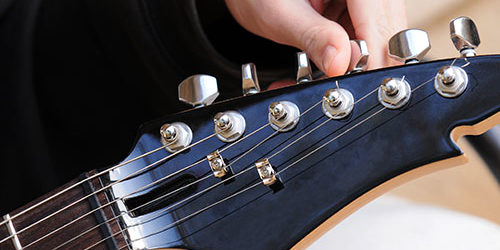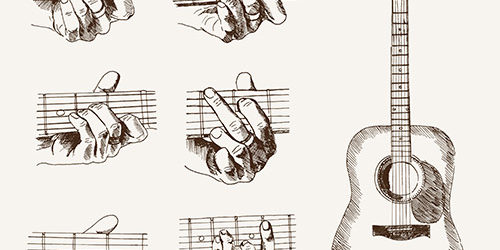
Before you start playing any instrument, a little bit of music theory is helpful and necessary.
This article will give you a basic understanding of musical notes.
To explain musical notes, we’ll take a look at notes on a keyboard because it nicely lays out the notes in two categories—white keys (natural notes) and black keys (sharps and flats)—and, as you move from the left side of the keyboard towards the right side, presents keys from low to high.
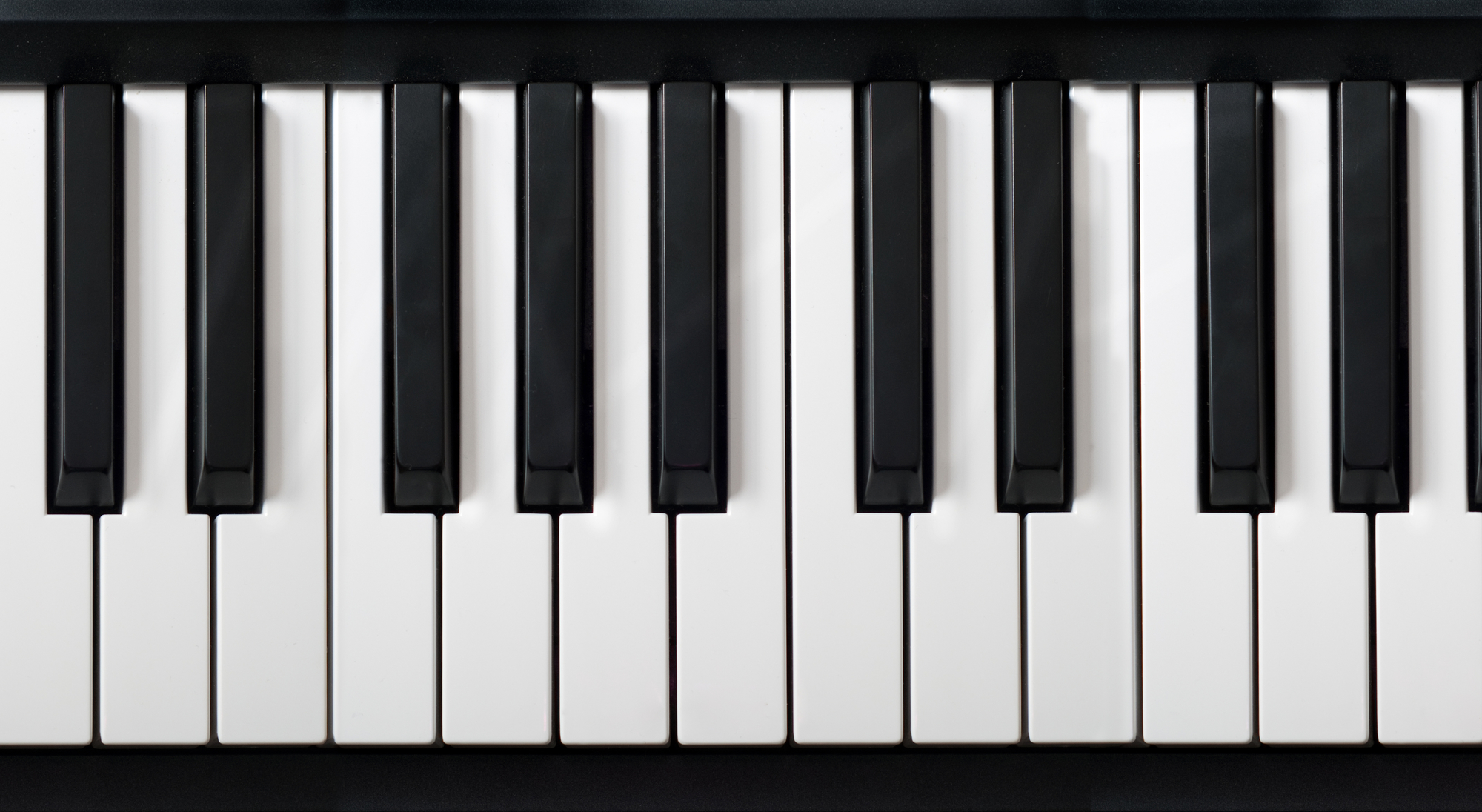
White Keys vs. Black Keys
(Natural Notes vs. Sharp and Flat Notes)
As you can see, there are white keys and black keys on the keyboard.
White keys are natural notes, named after seven alphabets: A B C D E F G. The black notes are sharp and flat notes, meaning they a half step away from the natural notes.
The context determines how you call the black keys. When you go up the scale (towards the right side), the notes go higher (sharp). When you go down the scale (to the left side), the notes go lower (flat).
For example, if you go from C to the black key to its right, the black key is called C-sharp or C#.
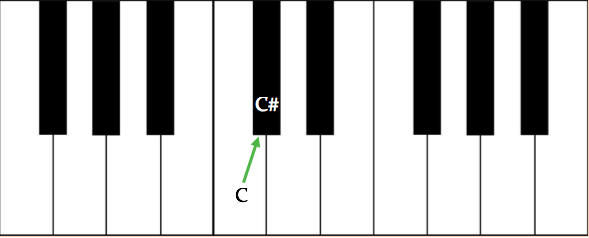
If you go from D to the black key to its left, the black key is called D-flat or Db.
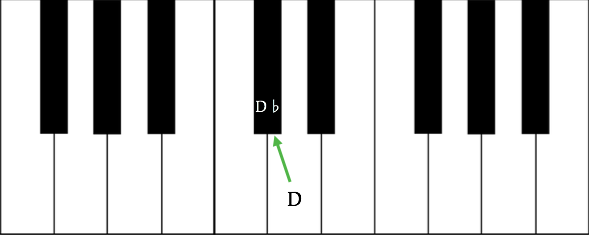
We are, however, talking about the same black key.
In short, C# = Db, and it’s the context that determines how you call it.
Octaves and scales
There are six octaves on the piano, and we can call all the notes their name (for example, C) and octaves (for example, 1). So you can point to a key on the keyboard and call it “C1.” The highest C on the keyboard is C6. When two notes are the same but octaves apart (such as C1 and C2), they sound similar but, listening closely, you can tell one is higher than the other.
Within one octave, there are eight notes. For example, C major scale within one octave contains:
C D E F G A B C
Each note is either a whole or a half step apart from its surrounding notes. The only two sets of natural notes a half step apart are E to F and B to C. In other words, C to D, D to E, F to G, G to A, and A to B are all a whole step apart. To help you remember the details, we can write out these notes as
A - B ^ C - D - E ^ F - G - A
A C major scale can therefore be written as:
C - D - E ^ F - G - A - B ^ C
(“-” means a whole step apart, and “^” means a half step apart.)
On the Guitar
Now you know how musical notes work, let’s take a look at notes on the guitar.
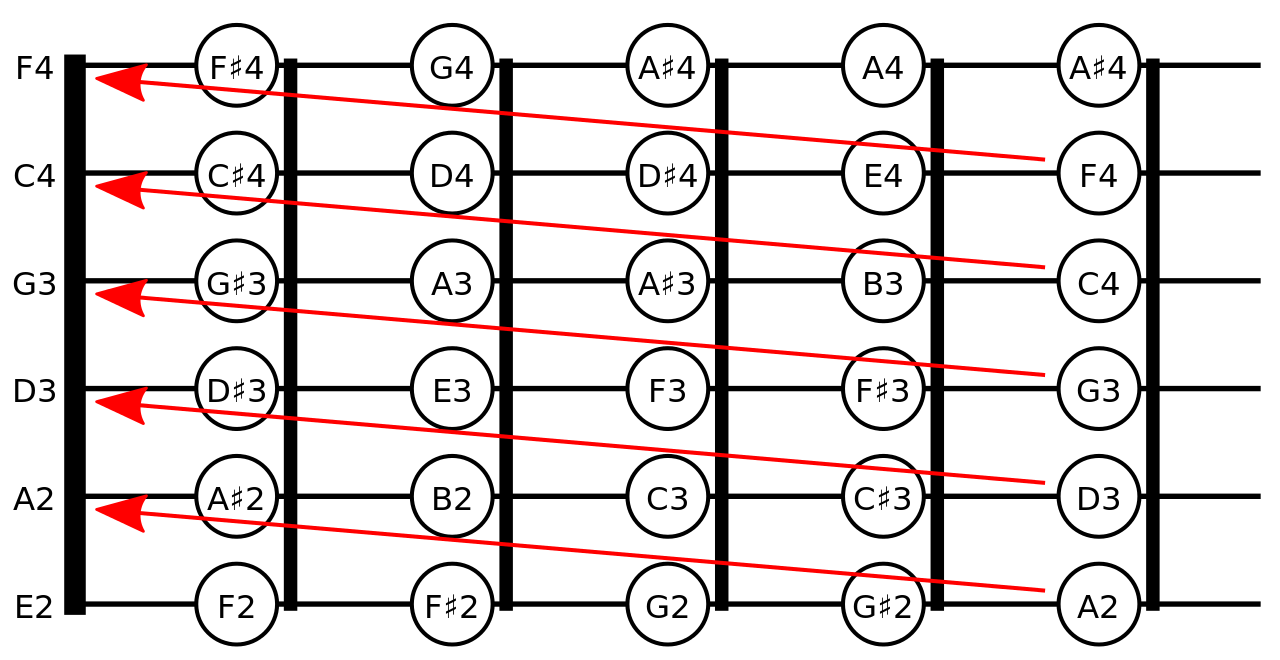
As you can see, the six strings on a guitar are tuned to E2 A2 D3 G3 B3 E4, which means they make the sound of these pitches when you strum the open strings.
When you fret, the distance between two frets is one half step, and that between three frets is one whole step.
So, if you want to play a note that is a whole step higher than the previous note, you simply move your finger two frets up.
With some basic understanding of the musical notes and how you can find them on the guitar, now you are ready to move on to our next topic—how to tune a guitar.

